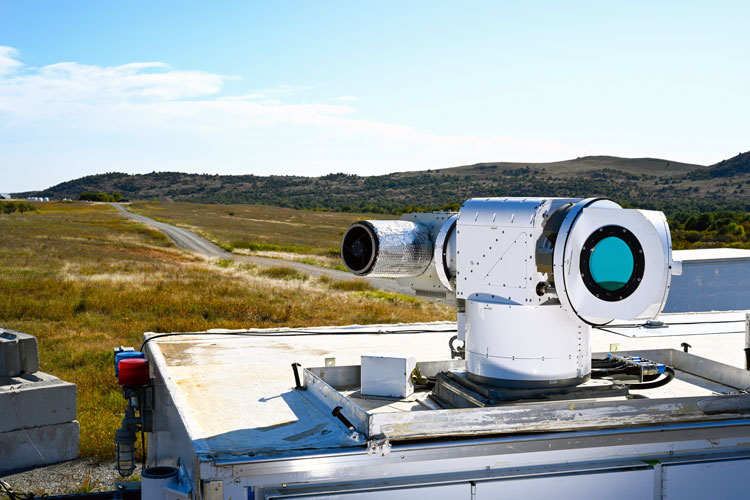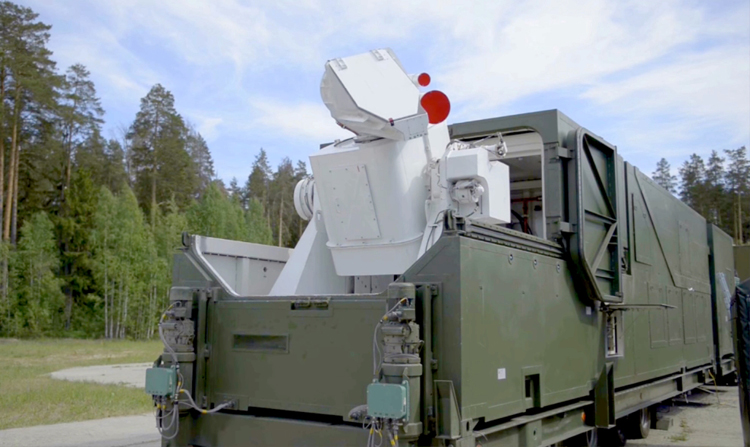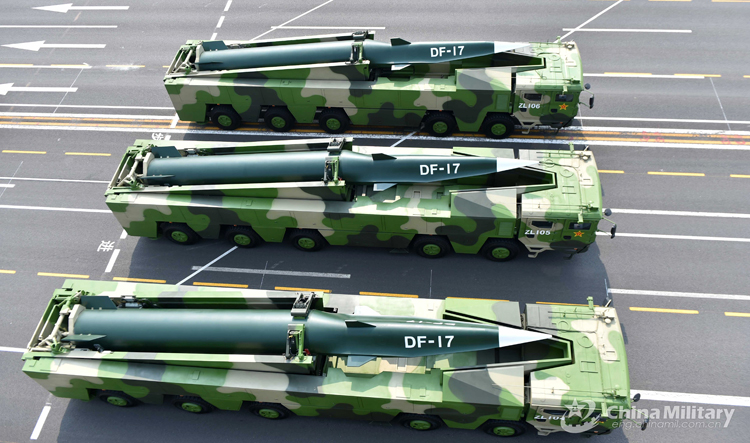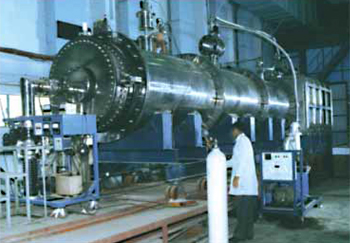INDIAN ARMED FORCES CHIEFS ON OUR RELENTLESS AND FOCUSED PUBLISHING EFFORTS

The insightful articles, inspiring narrations and analytical perspectives presented by the Editorial Team, establish an alluring connect with the reader. My compliments and best wishes to SP Guide Publications.

"Over the past 60 years, the growth of SP Guide Publications has mirrored the rising stature of Indian Navy. Its well-researched and informative magazines on Defence and Aerospace sector have served to shape an educated opinion of our military personnel, policy makers and the public alike. I wish SP's Publication team continued success, fair winds and following seas in all future endeavour!"

Since, its inception in 1964, SP Guide Publications has consistently demonstrated commitment to high-quality journalism in the aerospace and defence sectors, earning a well-deserved reputation as Asia's largest media house in this domain. I wish SP Guide Publications continued success in its pursuit of excellence.
- MoD initiates comprehensive review of Defence Acquisition Procedure 2020, pushes for defence reforms
- G7: The Swansong
- Kalinga Connect: South Asia to Polynesia
- Must Credit DRDO for Operation Sindoor, now what is next for defence R&D?
- The layered Air Defence systems that worked superbly, the key element of Operation Sindoor
- Operation Sindoor | Day 2 DGMOs Briefing
- Operation Sindoor: Resolute yet Restrained
Lasers in Defence
Recent advances in ultra-high-power lasers and laser weapons systems have shown the enormous potential of laser technology to revolutionise 21st century warfare
 |
The Author is Former Director General of Information Systems and A Special Forces Veteran, Indian Army |

A laser weapon is a Directed Energy Weapon (DEW) based on lasers. Laser weapons are being researched and developed by many nations; including addressing atmospheric thermal blooming on account of rain, snow, smog, dust obscurant and chemicals obscurant, since a lasergenerates a beam of light which needs clear air, or a vacuum. Many types of laser can potentially be used as incapacitating weapons, through their ability to produce temporary or permanent vision loss of humans.
Lasers of even a fraction of a watt-power can produce immediate, permanent vision loss under certain conditions. Using lasers or ‘Tasers’ as non-lethal weapons is controversial. Weapons designed to cause permanent blindness, are banned by the Protocol on Blinding Laser Weapons. But protocols/laws/conventions matter little to rogue nations like China. In 2018, China claimed it had developed a laser rifle ‘ZKZM-500’ capable of burning a hole in the human body from a distance of 800 metres. Such a weapon would be a boon to terrorist.
In November 2018, China demonstrated its new LW-30 laser defence weapon system that uses a directional-emission high-energy laser to quickly intercept many kinds of aerial targets, such as drones, guided bombs and mortars
America’s Lockheed Martin recently showcased the beam from its Advanced Test High Energy Asset (ATHENA) which is a 30KW high-power laser weapon - believed to be most powerful ever documented in a laser weapon. In the case of Russia, President Vladimir Putin had unveiled the ‘Peresvet’, Russian laser weapon on March 1, 2018, as part of six new strategic weapons. The weapon is named after Alexander Peresvet – a Russian Orthodox monk who fought in a single combat with the Tatar champion Temir-murza at the opening of the Battle of Kulikovo. Peresvet also means supra-light.

In 2017, an article in Chinese media described a Chinese laser weapon called ‘Silent Hunter’; a fiber-optic laser air-defence system that could burn through two 5-millimeter steel plates from a range of 1,000 meters. In November 2018, China demonstrated its new LW-30 laser defence weapon system that uses a directional-emission high-energy laser to quickly intercept many kinds of aerial targets, such as photoelectric guidance equipment, drones, guided bombs and mortars.
The LW-30 features sustainable-combat, high-energy focused launch, efficient thermal management and is reportedly also capable of long-range detection and imaging. The system can complete independent operations or multiple network strikes, and can be integrated into traditional air defence weapon systems including close-in weapon system and air-defence missiles. It can detect drones and contain enemies' tactical reconnaissance and strike aerial terror attacks.

China has been very focused on both laser as well as hypersonic systems. It is widely acknowledged to be the leader in the field of hypersonic systems, having already fielded such weapons in the form of the DF-17 hypersonic glide vehicle. The DF-41 ICBM is the most powerful weapon of the bunch with the DF-17 hypersonic boost glide missile in second place. American nuclear strategists will have to take these missiles into account as they ponder Chinese first or second-strike capabilities and intentions to use.
In February 2022, Israeli Prime Minister announced that a new laser defence system ‘Iron Beam’ will be deployed within a year to intercept incoming missile attacks, highlighting the increasing pace of development and utility of using high-energy lasers for missile defence
In February 2022, Israeli Prime Minister Naftali Bennett announced that a new laser defence system ‘Iron Beam’ will be deployed within a year to intercept incoming missile attacks; highlighting the increasing pace of development and utility of using high-energy lasers for missile defence. Israel already deploys the ‘Iron Dome’ (co-developed with the US) missile system that fires interceptors to destroy incoming missiles. Israel has also successfully tested an air-based laser system that can intercept drones. But use of ‘Iron Dome’ system has high costs especially in wake of increasing Hamas rocket attacks; to intercept each incoming Hamas rocket (costing $300-800), Israel has to spend at least $40,000 which is not cost-effective. Therefore, the urgency for ‘Iron Beam’; use much less costly laser to destroy an incoming target rather than using kinetic energy.
India has developed the KALI (Kilo Ampere Linear Injector) to destroy enemy missiles and aircraft. The project was initiated in 1985 by Dr R.K. Chidambaram, the then Director of the Bhabha Atomic Research Centre (BARC). Work on the project began in 1989 to develop industrial applications but its various abilities helped in making it a powerful weapon. The KALI series (KALI 80, KALI 200, KALI 1000, KALI 5000 and KALI 10000) are described as 'Single Shot Pulsed Gigawatt Electron Accelerators'. The single shot devices use water filled capacitors to build the charge energy. The beams from the weapon can shatter any satellite, aircraft, missile or UAV instantly.

KALI’s ability to emit powerful pulses of electrons and the conversion of electron energy into electromagnetic radiation pulse fuelled hopes that KALI could be used as a High-Power Microwave (HPM) gun. The X-Rays emitted by it are being used as an illuminator for ultrahigh speed photography Electronic components currently used in project can withstand fields of approximately 300 volt per centimeter. The Relativistic Electron Beams (REB) can be used for the generation of High Power Microwaves (HPM) and Flash X Rays (FXR).
News reports of February 19, 2022, state that Professor Ramesh Kumar Singh, from the Indian Institute of Technology, Bombay, has developed laser-based technology that autonomously repairs and restores high-value components such as moulds, turbine blades and other aerospace components with minimal human intervention. The technology has immense scope in the defence and aviation sectors. This technology has already undergone validation and testing.
India has developed the KALI (Kilo Ampere Linear Injector) to destroy enemy missiles and aircraft. The beams from the weapon can shatter any satellite, aircraft, missile or UAV instantly.
A statement issued by the Ministry of Science and Technology reads, “It is expected that this technology will leap-frog the restoration and repair industry to the next level and help in nucleation of a viable cutting-edge laser manufacturing ecosystem.” The defective component that needs to be repaired is examined autonomously for damage with a laser scanner and special algorithms are used for determining the deposition path. Laser-directed energy deposition (LDED) technique is then used to deposit the required material followed by finishing and automated post-restoration inspection.
Professor Ramesh Kumar has said in a statement, “The repair and restoration system is robotic and capable of functioning autonomously for all key activities such as scanning, path planning, damage assessment, material deposition, finishing and inspection.In addition, the process parameters will be obtained from physics-based models to induce favourable residual stress, which is one of the key limitations in restoration. This paves the way for the development of ‘science enabled technology’ solutions, which are not available for restoration of high-value components. The developed technology is very impactful, and a game-changer for the restoration and repair segment of the manufacturing industry and has huge market potential. The components which can be reconditioned via this technology are very high-value. The level of accuracy and precision, which is possible through this technology, is phenomenal and is far ahead of the current state-of-the-art methods.”





